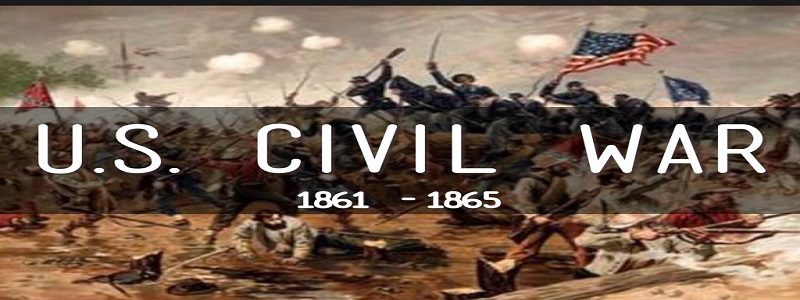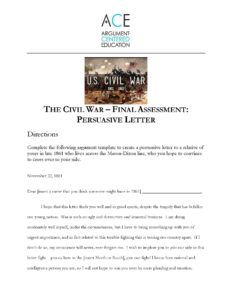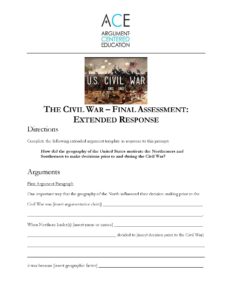
The U.S. Civil War and Argument-Templated Final Assessments
We’re working with a partner school right now that wants to do argument-based final assessments in their Civil War unit in their History/Humanities curriculum. The students are very capable but they’re in a relatively early stage in their study and use of academic argumentation. So we put together two argument-templated final assessments, which are now being given to students in various ways: some students are taking both assessments, some students are taking one, and some the other.
Civil War Letter
One argument-templated assessment has students role-playing that they are on one side or the other of the conflict late in the year in 1861, and they are writing to a relative living on the other side of the divide. The letter posits that their relative is a rational and intelligent person, interested in evidence and reasoning when they make important decisions. The letter-writer has to make three evidence-based arguments appealing to the relative to switch sides in the Civil War and join the student’s cause. They also have to address and refute the best reason the relative is likely to have to stay with their current side — the strongest counter-argument.
 Extended Response: Geography-Influenced Decisions
Extended Response: Geography-Influenced Decisions
The other argument-templated assessment asks students to address this debatable prompt:
How did the geography of the United States motivate the Northerners and Southerners to make decisions prior to and during the Civil War?
Instruction during the unit investigated the ways that the geography of the north and the south changed the way that the sides prepared for and were led into the Civil War, and the way the antagonists fought the Civil War. Students in this assessment follow a detailed template to first identify a unifying claim for the ways that a side was influenced by geography — e.g., “The South was influenced by its agrarian-friendly geography and climate to both defend its farm-based economy, and to fight open-field battles.” Then the template structures argumentation so that for each side, North and South, students defend their region-specific claim with evidence first from before the War, than from the fighting during the war. Students are guided to cleanly organize their argumentation, and to draw on their content learning and knowledge to evidence and reason through their idea on the prompt.
 Final Thought
Final Thought
These two argument-templated final assessments are models of the way that templatization can support differentiation in the argument-centered classroom, and how they can help develop students’ comfort and facility with argument, and their understanding of the underlying infrastructure of argument writing, across disciplines.

